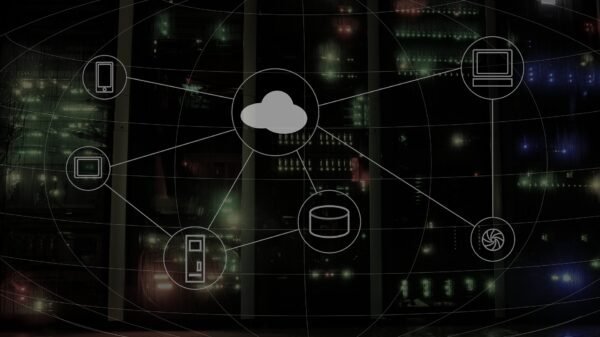Edge Computing: The Next Evolution of Cloud Computing
With a compound annual growth rate of 12.5%, the IDC expects the global edge computing industry to reach $250 billion by 2024. It makes sense that the industry is discussing edge computing.
One of the “new revolutionary technologies” that can transform businesses seeking to overcome the past constraints of conventional cloud-based networks is edge computing. The natural inflection point for edge computing will occur over the next 12 to 18 months. Finally, real-world applications where this design might be advantageous are starting to emerge.
Today, centralised data centres are where 91% of our data is produced and processed. Businesses will continue to benefit from cloud computing in terms of cost reduction, agility, reliability, and innovation catalyst. However, in the future, the “Internet of Behaviours (IoB)” will fuel the next stage of development with limitless new opportunities to re-imagine goods and services, user experiences, and operational excellence. One of the most talked-about and sought-after strategic technology developments for 2021 is the IoB. Depending on the objectives and results of specific usage, the IoB has ethical and societal consequences, according to Gartner. It also has to do with using data to alter behaviour. For instance, information might affect behaviours from feedback loops during periods like COVID-19 monitoring due to enhanced technology that quickly collects dust.
The Internet of Behaviours’ essential components are IoT, IIoT, AI, ML, Digital Twins, and Edge computing. By 2022, about 75% of all data will need to be analysed and handled at the edge. What sets edge computing apart from the other conventional data processing options has been a topic of discussion inside organisations. A major subject is also if and how much it is great for their business.
Although comprehending the fundamentals of edge computing is straightforward, grasping its advantages might be challenging. Edge computing can offer a direct on-ramp to a company’s preferred cloud platform and helps to achieve flexibility to support an integrated IT architecture.
In order to enter the IoT industry or find more effective ways to supply content services, businesses need to understand edge computing and the advantages it offers. Everything you need to know about edge computing and what it can do for your organisation will be covered in this article.
Edge Computing:
It is a distributed computing paradigm that avoids employing a centralised server or cloud by conducting computer operations close to the physical location of the data collecting and processing centre. Data is collected by sensors in the upgraded infrastructure, and edge servers securely process data locally in real time.
Edge Computing: The Cloud’s Future
Businesses may now relax a bit about data security thanks to a significant shift in the network architectural environment brought about by the miniaturisation of processing and storage technology.
IoT devices now can acquire, store, and interpret enormous volumes of data far more quickly than they could in the past. This gives companies more reasons to upgrade and integrate their networks so that processing operations may be moved near to the data acquired at the network edge and evaluated and used in real time closer to the intended consumers.
Edge computing networks are essential for reducing latency and boosting performance since an IoT device does not need to constantly loop back to the central server in order to understand what task has to be completed. This approach of data management’s speed and adaptability demonstrates that businesses are on the verge of experiencing data analysis and storage with ground-breaking ease.
What makes edge computing important right now?
Edge computing is crucial now because it is a modernization for multinational corporations to increase their operational effectiveness, performance, and data security. Additionally, it will make it easier to automate all fundamental business procedures and provide the “always-on” feature. Edge computing is the secret to accomplishing complete digital transformation and more effective company operations.
Edge Computing: The Cloud Computing’s Future
Edge computing: The Future of Cloud Edge computing is important now because it is enabled by cutting-edge innovations like 5G, Digital Twin, and platforms for cloud-native application, database, and integration development.
5G’s speed and low latency are key edge enablers.
34% of the world’s population will have access to 1.2 billion 5G connections by the year 2025. The new currency of networking is highly dependable low-latency, which is supporting new capabilities in several previously unfeasible businesses. With 5G, we’ll witness a completely new set of applications made feasible by its low latency and the growth of edge computing, revolutionising the realm of the possible.
Additionally, the Private 5G Network will promote Edge computing and drive businesses to the Edge. A network that is devoted to a particular company or location, such a warehouse, shipyard, or factory, is seen as having instant value by Forrester.
Response Required in Near Real-Time
If the AI/ML-powered solution is placed in a remote area or the user is moving, reaction time or speed of response are vital necessities. Someone’s life might be lost if there is even a minute delay in the algorithms of a hospital’s remote patient monitoring system. Companies that provide data-driven services can’t afford to be slow since doing so might seriously harm their brand’s reputation and the quality of the client experience. Data traffic congestion is not far off as more and more data is created and sent. Edge computing makes it possible to improve network performance by cutting down on latency. Information does not need to travel as far as with cloud computing since IoT edge computing devices process data locally at edge data centres.
Container Organizations may execute prepackaged software containers more rapidly, reliably, and effectively thanks to container technologies like Docker and Kubernetes. These technologies enable businesses to deploy and expand Micro Clouds anywhere and however they see fit.
Data and Service Interact
A crucial enabler, Service and Data Mesh provides a mechanism for releasing and requesting data or services that are dispersed over the Edge through datastores and containers. Additionally, it enables bulk queries across all devices for the whole Edge population, making things easier.
SDN, or software-defined networking
By allowing users to configure overlay networks, software-defined networking makes it easier to tailor routing and bandwidth when deciding how to link edge devices and the Cloud.
Digital Twin
The physical-to-digital and cloud-to-edge organisation is made possible by the digital twin, which allows domain experts—not just software engineers—to set their applications to watch, consider, and respond to the Edge.
Edge Computing: IIoT adoption and cloud maturity for OT and IT integration
The development of IIoT systems and Edge AI opens the door for IT-OT convergence, giving the company a competitive edge in innovation.
Development of IoT Sensor Industry
More substantial commercial advantages, such as increased productivity and efficiency and lower costs for data collecting, analysis, and interchange, are offered by the Internet of things in the industry of Things, or IIoT, sensors.
The structure and architecture of mobile networks are transformed by Multi-Access Edge Computing (MEC) MES from a purely network of communications for data and voice to an app platform for services. The service ecosystem that will define 5G is complemented and made possible by MEC. Examples include Industry 4.0, eHealth, Remote Patient Monitoring, and Connected Cars.
(XR) Extended Reality
In a virtualized environment, XR stands for an immersive user interface. These encounters get even more comprehensive and dynamic with the aid of edge computing.
Hardware diversity and neuromorphic processors
Edge computing is becoming more widespread as a result of innovations in diverse hardware and ruggedized HCI/Edge devices, which process more data more quickly while consuming less energy. By incorporating this particular hardware on Edge, it is possible to compute effectively in real-world settings while speeding up reaction times.
In order to win the market, hyperscalers, 5G, and chip OEM are inventing quickly. Microsoft’s newest edge computing platform, Azure Percept, brings the greatest cloud services, hardware, and software to the edge. Makers and builders can create and prototype intelligent IoT apps with Azure Percept, which is a great tool powered by Azure Cognitive Services and Azure Machine Learning Services.
By providing real-time intelligence and continuous onboard learning—on a restricted energy budget—at the network edge, neuromorphic processors and sensors will fill a crucial gap in the approach. Increasingly advanced AI may be delivered at the Edge thanks to neuromorphic computer architectures, which were inspired by the brain. Systems with neuromorphic architectures
- Permit devices to adjust to context-dependent changes.
- Are far more energy-efficient than preceding general-purpose computer designs.
- Excel decreases the time it takes to do analysis by analysing constantly changing data streams and installing neuromorphic computers at the edge.
- Have advanced the capabilities of the majority of traditional AI systems by enabling quick learning from small data.
Technology that respects privacy
The processing of data is made possible by new privacy-focused technology and processing methods that hide some of the problematic characteristics. During transmission and storage, data is encrypted. However, privacy-preserving technology is obligated to protect data even throughout the computing stage, increasing its dependability for other departments and partners of the company, particularly when processing on Edge is necessary.
Robotics
Robotics can be set up to respond to updates and signals from the edge. This has been observed in crucial surgical operations requiring quickness and accuracy. To ensure there is no latency between movements, the Edge and Cloud are both crucial for controlling the robot’s motions and executions using stored data.
How Cloud Computing will be fueled by Edge Computing
Edge Computing symbolises the prospects of a cloud tech expansion by making it impenetrable, based on what we have seen so far. Several possible manifestations of this continuum are covered below:
AI and IoT Expansion
Manufacturing facilities, hospitals, and the retail industry—where the bulk of operations deal with the most sensitive data—all now perform a significant amount of computation on Edge. Additionally, it provides the most essential systems with the power they need to run securely and dependably. Decision-making on these fundamental functioning systems can be facilitated by Edge. There is a market for the Edge when there is a chance for AI and IoT to access these systems.
Multi-Partner / Multi-Company Solutions’ value generation
You have power over the nearest point of data action when you comprehend and take control of the Edge. Utilising this rare chance to offer specialised services might assist a company in successful endeavours with worthwhile connections that expand.
Edge computing, for instance, has advantages for businesses that produce automobiles, sell insurance, supply energy and services, and build cities. Edge computing may provide your company with fresh data and allow you to provide your partners with even more value, which is an ideal scenario. The cloud is used to process the new edge-friendly information and services while integrating them with existing organisational data and applications.
transforms emerging technology such as 5G, robots, XR, and other linked gadgets
Since the present scope needs to be expanded nevertheless, edge computing is essential to maximising the benefits of next-generation technology. The demand for a more advanced technical infrastructure for processing information that is quicker, wiser, and more effective grows over time. Their combined impact may result in new services like voice control for your car or teleoperated regret surgeries. Edge makes it easier to have the control and programming ability needed to integrate these capabilities into a company.
Conclusion
Technology has made everything “smart” and “intelligent” in modern society. Significant goods and services use artificial intelligence (AI) to comprehend orders, evaluate data, spot trends, and make choices for humans. This technology is present in everything from household appliances and cars to industrial equipment. Today’s intelligent goods are mostly powered by remote processing that takes place in data centres or the Cloud, where there is sufficient processing capacity to perform the necessary algorithms.
Edge computing will continue to open the door for several new and beneficial applications, services, and use cases as it grows.
Edge AI can now further improve these instances, giving businesses fresh perspectives on old business procedures and enabling them to develop potent ideas that will alter their industry. Edge AI may therefore assist businesses in gaining a fresh and long-lasting competitive advantage—let’s call it a competitive edge.
Edge is the future that was envisioned less than 10 years ago and is more accessible to us than ever because of 5G’s increased bandwidth and Distributed Cloud’s low-latency compute. This technology is astounding because it has made several advances that are more substantial than we could have ever imagined. Edge computing is similar to science fiction becoming a reality, although this experience is more expansive and full of larger possibilities. Using the Edge will not only position your company for a new era of prosperity but will also enable you to manage your firm more effectively, produce more amazing inventions in a short amount of time, and get more out of your affiliations.














































Comment Template